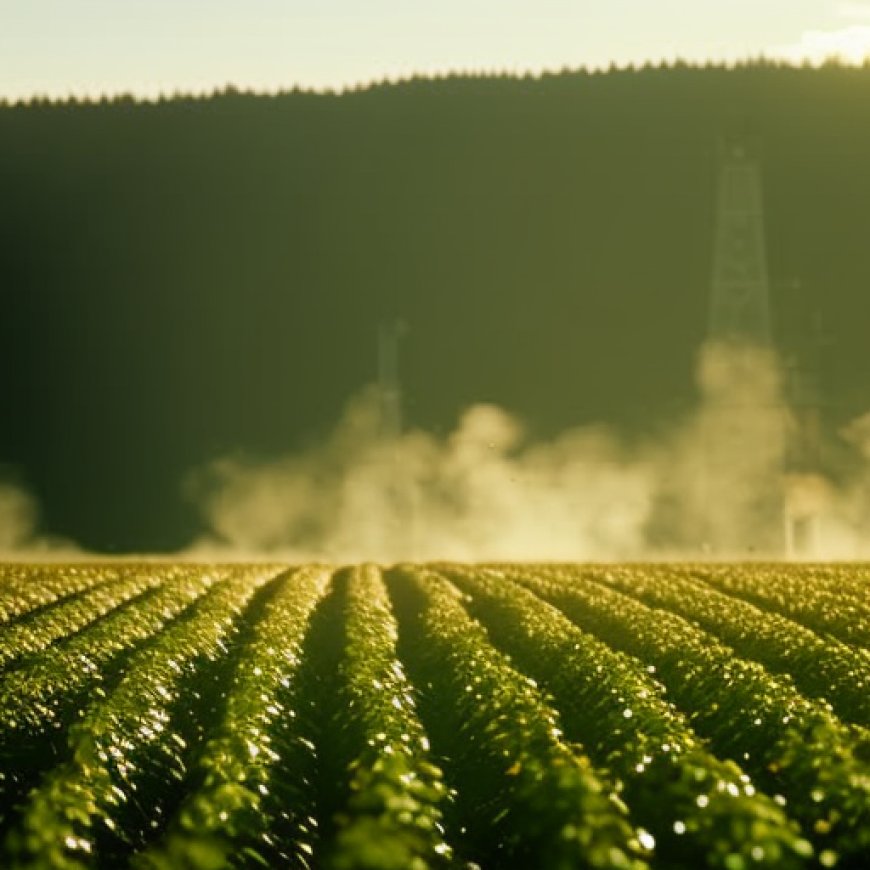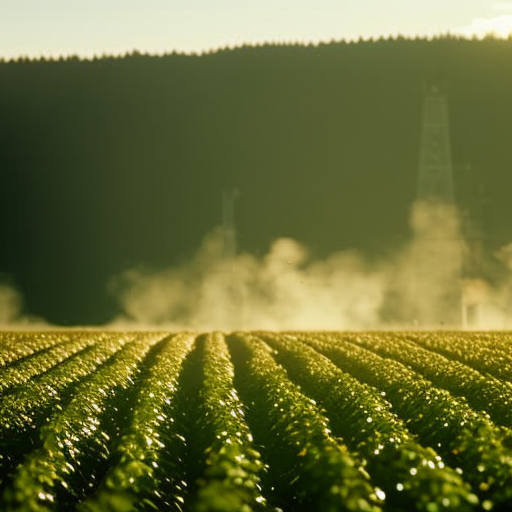State grants help Michigan counties preserve agricultural land—and protect farmers’ jobs
State grants help Michigan counties preserve agricultural land—and protect farmers' jobs The 'Gander


About $2 million in state grant funding awarded last month is set to help local counties and townships preserve more than 670 acres of farmland (and hundreds of jobs) in Michigan.
MICHIGAN—Millions of dollars in state grant funding awarded last month will be used to purchase the development rights of farmland in eight communities across Michigan, ultimately ensuring that hundreds of acres of land will be preserved exclusively for agricultural use.
State officials said $2 million in grant funding awarded this month through the Michigan Agricultural Preservation Fund Board is designed to ensure more Michiganders have access to locally sustainable sources of fresh food, as well as ensure local farmers can keep their jobs.
“Farmland preservation is not just about protecting local lands. It’s about protecting and nurturing our roots while creating a system that ensures sustenance for generations to come,” said Tim Boring, director of the Michigan Department of Agriculture and Rural Development.
The state fund—which was established through legislation in 2000—distributes grants covering up to 75% of the costs for counties and townships to buy the development rights on agricultural land, and then set up permanent agricultural conservation easements to preserve farmland.
The state program is designed to ensure the land remains in agricultural use for a minimum of 10 years, effectively blocking any development for non-agricultural purposes. In return, the landowners may be entitled to state tax credits and exemptions from local tax assessments.
All told, the grant funding awarded last month is set to preserve 670 acres of farmland:
- Peninsula Township on Traverse City’s Old Mission Peninsula received the most funding, with a grant of $675,000.
- Washtenaw and Ottawa counties received $238,000 and $206,000, respectively.
- Ann Arbor, Dexter, and Scio townships each received $200,000.
- Webster Township received a $160,000 grant.
- Kent County received a grant for $121,000.
“Michiganders continue to express they care about how and where their food is grown and preserving farmlands across our state allows for fresh food to be grown, processed and sold within local communities,” Boring said in a statement announcing the grants last month.
In Washington:
This week, President Joe Biden’s administration also announced a $1.5 billion federal investment designed to help farmers, ranchers, and forest landowners adopt and expand conservation strategies to enhance natural resources while tackling the climate crisis.
The funding was made available through the Regional Conservation Partnership Program as part of Biden’s Investing in America agenda— including the Inflation Reduction Act and Bipartisan Infrastructure Law, federal officials said in a press release on Wednesday.
READ MORE: Farmers call for federal ‘safety net’ after sludge sinks Michigan cattle farm
For the latest Michigan news, follow The ‘Gander on Twitter.
Follow Political Correspondent Kyle Kaminski here.
SDGs, Targets, and Indicators
-
SDG 2: Zero Hunger
- Target 2.4: By 2030, ensure sustainable food production systems and implement resilient agricultural practices that increase productivity and production, that help maintain ecosystems, that strengthen capacity for adaptation to climate change, extreme weather, drought, flooding, and other disasters, and that progressively improve land and soil quality.
-
SDG 8: Decent Work and Economic Growth
- Target 8.5: By 2030, achieve full and productive employment and decent work for all women and men, including for young people and persons with disabilities, and equal pay for work of equal value.
-
SDG 11: Sustainable Cities and Communities
- Target 11.3: By 2030, enhance inclusive and sustainable urbanization and capacity for participatory, integrated, and sustainable human settlement planning and management in all countries.
-
SDG 12: Responsible Consumption and Production
- Target 12.2: By 2030, achieve the sustainable management and efficient use of natural resources.
Table: SDGs, Targets, and Indicators
| SDGs | Targets | Indicators |
|---|---|---|
| SDG 2: Zero Hunger | Target 2.4: By 2030, ensure sustainable food production systems and implement resilient agricultural practices that increase productivity and production, that help maintain ecosystems, that strengthen capacity for adaptation to climate change, extreme weather, drought, flooding, and other disasters, and that progressively improve land and soil quality. | Not mentioned or implied in the article. |
| SDG 8: Decent Work and Economic Growth | Target 8.5: By 2030, achieve full and productive employment and decent work for all women and men, including for young people and persons with disabilities, and equal pay for work of equal value. | Not mentioned or implied in the article. |
| SDG 11: Sustainable Cities and Communities | Target 11.3: By 2030, enhance inclusive and sustainable urbanization and capacity for participatory, integrated, and sustainable human settlement planning and management in all countries. | Not mentioned or implied in the article. |
| SDG 12: Responsible Consumption and Production | Target 12.2: By 2030, achieve the sustainable management and efficient use of natural resources. | Not mentioned or implied in the article. |
Explanation:
1. The article addresses SDG 2: Zero Hunger as it discusses the preservation of farmland to ensure sustainable food production systems and access to locally sustainable sources of fresh food. The specific target under this SDG is Target 2.4, which focuses on implementing resilient agricultural practices and improving land and soil quality. However, no indicators are mentioned or implied in the article to measure progress towards this target.
2. The article does not directly address any other SDGs or targets.
3. No indicators are mentioned or implied in the article that can be used to measure progress towards the identified targets.
Therefore, based on the information provided in the article, only SDG 2: Zero Hunger and its corresponding target can be identified, but no indicators are mentioned or implied.
Behold! This splendid article springs forth from the wellspring of knowledge, shaped by a wondrous proprietary AI technology that delved into a vast ocean of data, illuminating the path towards the Sustainable Development Goals. Remember that all rights are reserved by SDG Investors LLC, empowering us to champion progress together.
Source: gandernewsroom.com

Join us, as fellow seekers of change, on a transformative journey at https://sdgtalks.ai/welcome, where you can become a member and actively contribute to shaping a brighter future.







